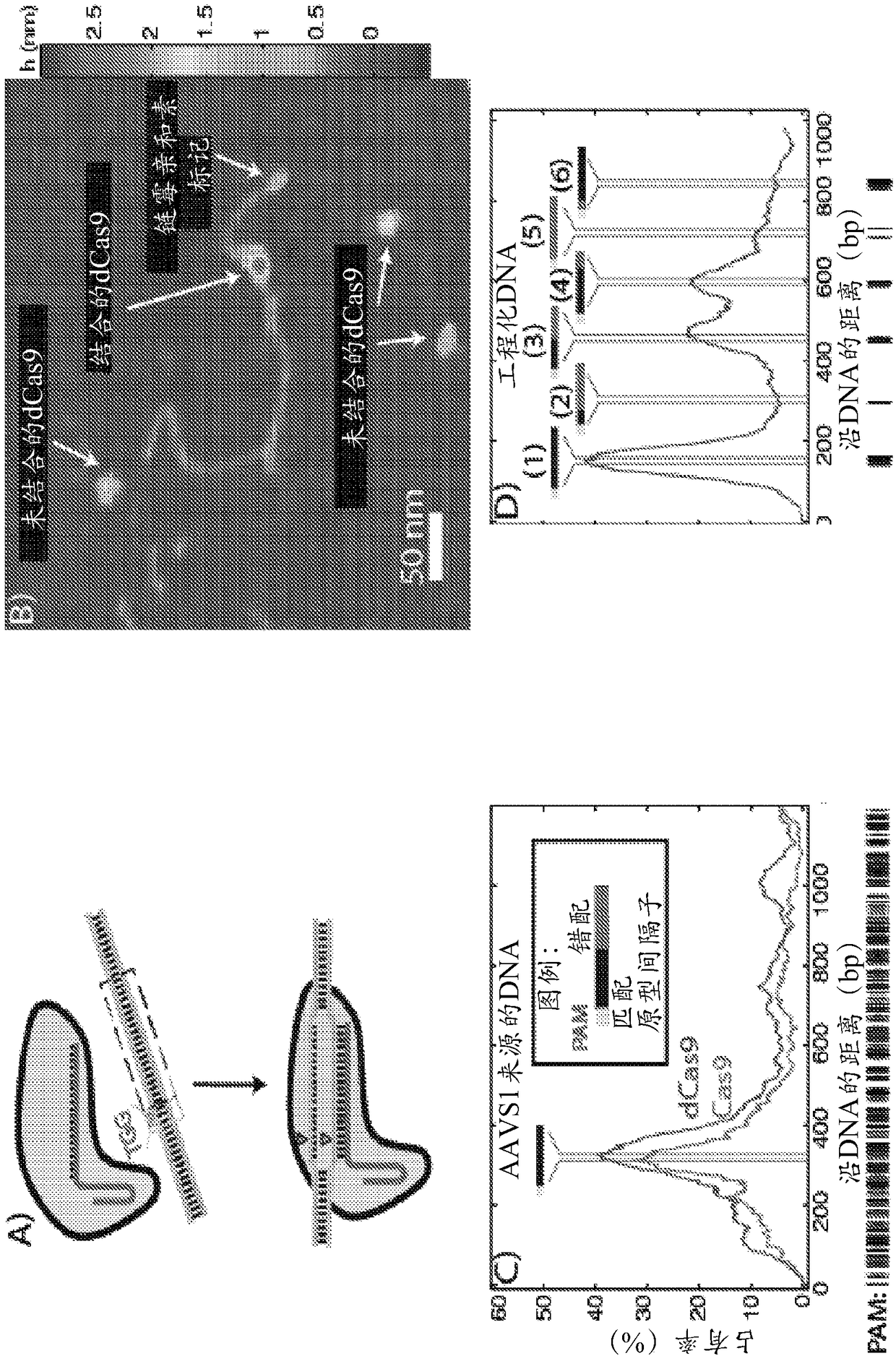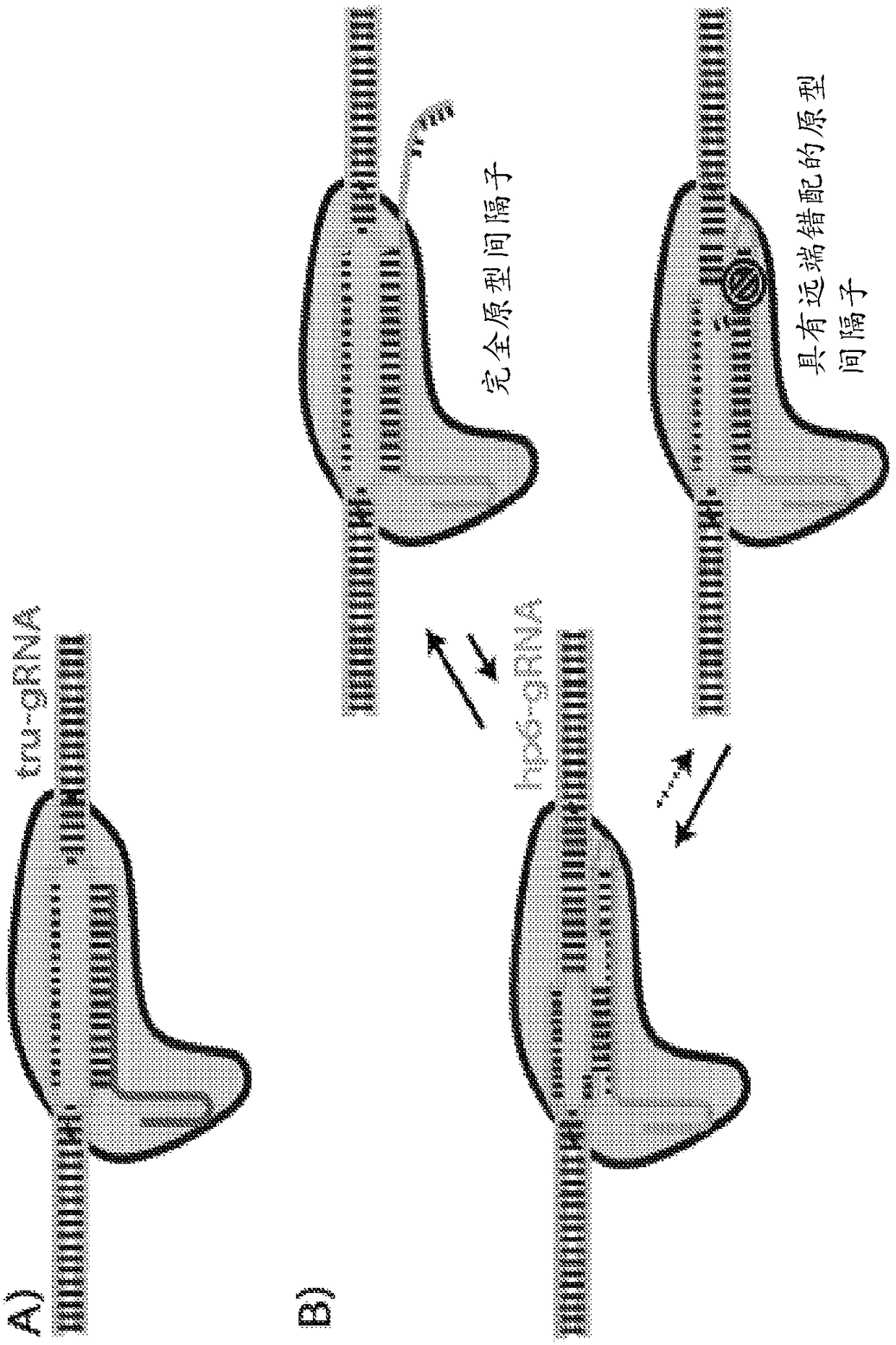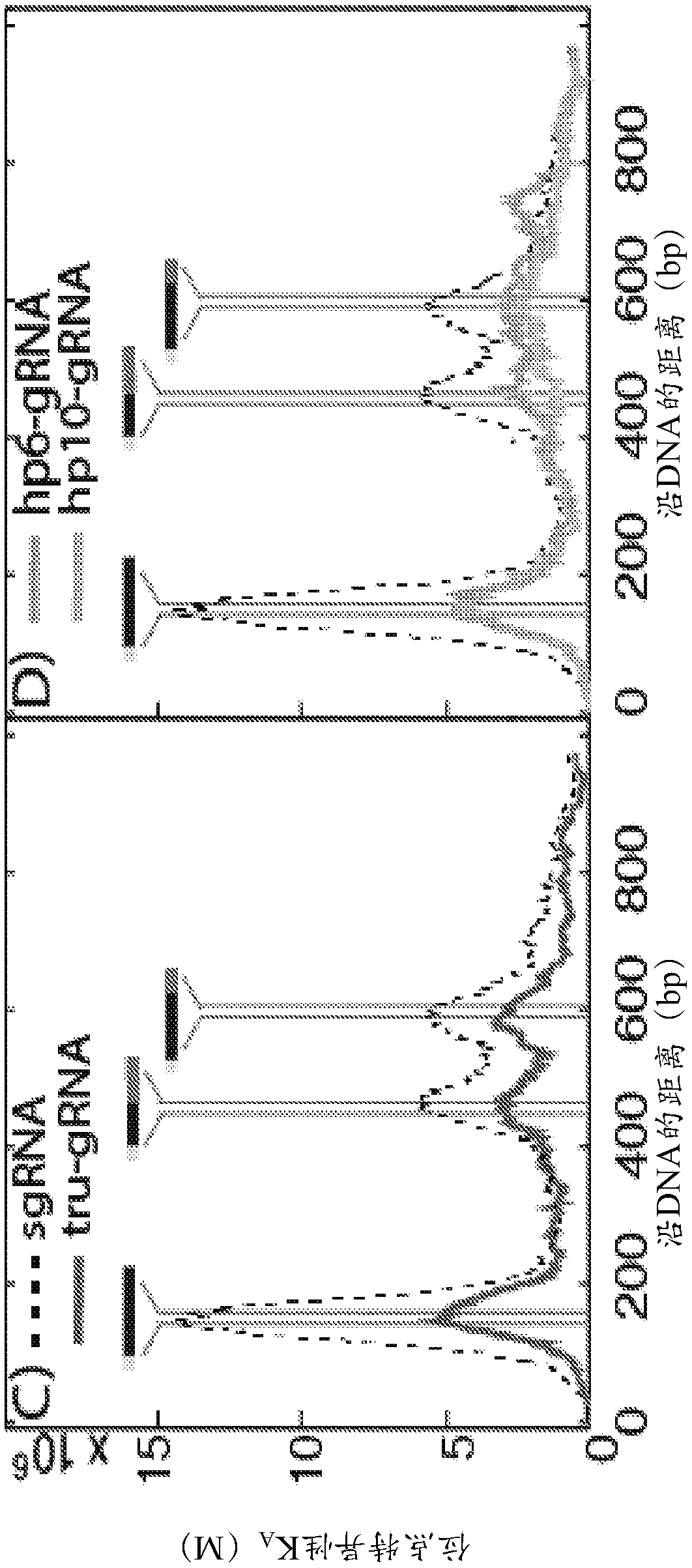Compositions and methods of improving specificity in genomic engineering using rna-guided endonucleases
A nucleotide and polynucleotide technology, applied in the field of compositions and methods for improving the specificity of genome engineering using RNA-guided endonucleases, which can solve problems affecting potential uses and the like
- Summary
- Abstract
- Description
- Claims
- Application Information
AI Technical Summary
Problems solved by technology
Method used
Image
Examples
example 1
[0294] Materials and Methods
[0295] Material. Tris-HCl (pH 7.6) buffer was obtained from Corning LifeSciences. L-glutamic acid monopotassium salt monohydrate, dithiothreitol (DTT) and magnesium chloride were obtained from Sigma Aldrich Co., LLC.
[0296] Cloning of Cas9, dCas9 and sgRNA expression plasmids ; Plasmids encoding Cas9, dCas9 and sgRNA targeting the AAVS1 locus of human chromosome 19 were cloned, expressed and purified using standard techniques. DNA substrates for imaging were also generated using standard techniques - (i) a 1198 bp substrate derived from a segment of the AAVS1 locus of human chromosome 19; (ii) containing a series of six complete, partial or mismatched and (iii) a 1078 bp "nonsense" substrate with no homology (>3 bp) to the protospacer. Plasmids encoding wild-type Cas9 and dCas9 were obtained from Addgene (plasmid 39312 and plasmid 47106). Plasmids for expression of Cas9 and dCas9 in bacteria were cloned using Gateway cloning (Life Technol...
example 2
[0315] Atomic force microscopy captures specifically and nonspecifically bound Cas9 / dCas9 along engineered DNA substrates at high resolution
[0316] Analysis of crystallographic and biochemical experiments revealed that specificity for protospacer binding and cleavage is conferred by first recognizing the PAM site by Cas9 itself, followed by strand invasion and spacer binding to the protospacer by the bound RNA complex Watson-Crick base pairing directly (Fig. 1A), but the full mechanistic picture has not yet emerged. To directly probe the relative propensity to bind protospacers and off-target sites at single-molecule resolution, 50 nM Cas9-sgRNA or dCas9-sgRNA complexes targeting the AAVS1 locus of human chromosome 19 were synthesized in combination with three DNA substrates ( 2.5nM) and imaged by AFM in air after incubation with:
[0317] (i) 1198 bp segment of the AAVS1 locus containing the complete target site followed by a PAM (hre "TGG") (Fig. 1C);
[0318] (ii) A 989...
example 3
[0347] An sgRNA (tru-gRNA) with two nucleotide truncations at the 5' end does not increase the binding specificity of dCas9 in vitro
[0348] Cas9 was found to exhibit cleavage activity even when the guide (protospacer-targeting) segment of the sgRNA or crRNA was truncated by up to four nucleotides from its 5' end, and Fu et al. (21) recently showed that using a These 5'-truncated (optimally truncated by 2-3 nucleotides) sgRNAs can actually lead to an order-of-magnitude increase in the fidelity of Cas9 cleavage in vivo. It has been suggested that the increased sensitivity to mismatch sites (MM) using these truncated sgRNAs (termed "tru-gRNAs", Figure 2A) is due to their binding between the guide RNA and the in situ spacer site Can reduce the result. This implies that the binding energy conferred by the extra 5'-nucleotides on the sgRNA can compensate for any mismatched nucleotides and stabilize Cas9 at the incorrect site, whereas the tru-gRNA will bind on the DNA if there is ...
PUM
| Property | Measurement | Unit |
|---|---|---|
| height | aaaaa | aaaaa |
Abstract
Description
Claims
Application Information
 Login to View More
Login to View More - R&D
- Intellectual Property
- Life Sciences
- Materials
- Tech Scout
- Unparalleled Data Quality
- Higher Quality Content
- 60% Fewer Hallucinations
Browse by: Latest US Patents, China's latest patents, Technical Efficacy Thesaurus, Application Domain, Technology Topic, Popular Technical Reports.
© 2025 PatSnap. All rights reserved.Legal|Privacy policy|Modern Slavery Act Transparency Statement|Sitemap|About US| Contact US: help@patsnap.com



